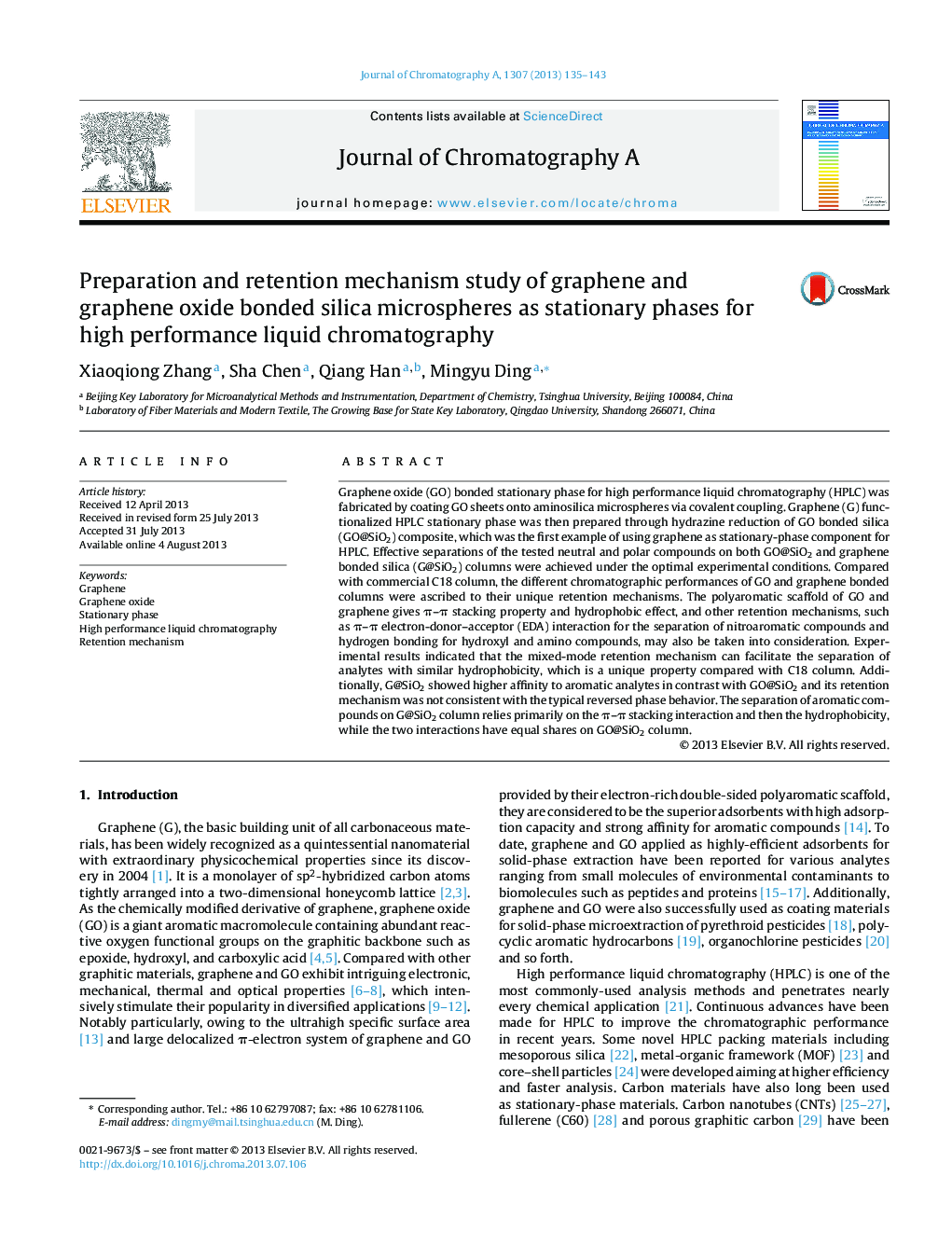| کد مقاله | کد نشریه | سال انتشار | مقاله انگلیسی | نسخه تمام متن |
|---|---|---|---|---|
| 1203848 | 1493619 | 2013 | 9 صفحه PDF | دانلود رایگان |

• HPLC stationary phases bonded with graphene oxide and graphene were prepared.
• Graphene was firstly applied as stationary-phase component for HPLC.
• Effective HPLC separations were achieved on GO@SiO2 and G@SiO2 columns.
• A mixed-mode retention mechanism of the novel stationary phases was proposed.
• Analytes of similar hydrophobicity were separated easily on GO@SiO2 column.
Graphene oxide (GO) bonded stationary phase for high performance liquid chromatography (HPLC) was fabricated by coating GO sheets onto aminosilica microspheres via covalent coupling. Graphene (G) functionalized HPLC stationary phase was then prepared through hydrazine reduction of GO bonded silica (GO@SiO2) composite, which was the first example of using graphene as stationary-phase component for HPLC. Effective separations of the tested neutral and polar compounds on both GO@SiO2 and graphene bonded silica (G@SiO2) columns were achieved under the optimal experimental conditions. Compared with commercial C18 column, the different chromatographic performances of GO and graphene bonded columns were ascribed to their unique retention mechanisms. The polyaromatic scaffold of GO and graphene gives π–π stacking property and hydrophobic effect, and other retention mechanisms, such as π–π electron-donor–acceptor (EDA) interaction for the separation of nitroaromatic compounds and hydrogen bonding for hydroxyl and amino compounds, may also be taken into consideration. Experimental results indicated that the mixed-mode retention mechanism can facilitate the separation of analytes with similar hydrophobicity, which is a unique property compared with C18 column. Additionally, G@SiO2 showed higher affinity to aromatic analytes in contrast with GO@SiO2 and its retention mechanism was not consistent with the typical reversed phase behavior. The separation of aromatic compounds on G@SiO2 column relies primarily on the π–π stacking interaction and then the hydrophobicity, while the two interactions have equal shares on GO@SiO2 column.
Journal: Journal of Chromatography A - Volume 1307, 13 September 2013, Pages 135–143